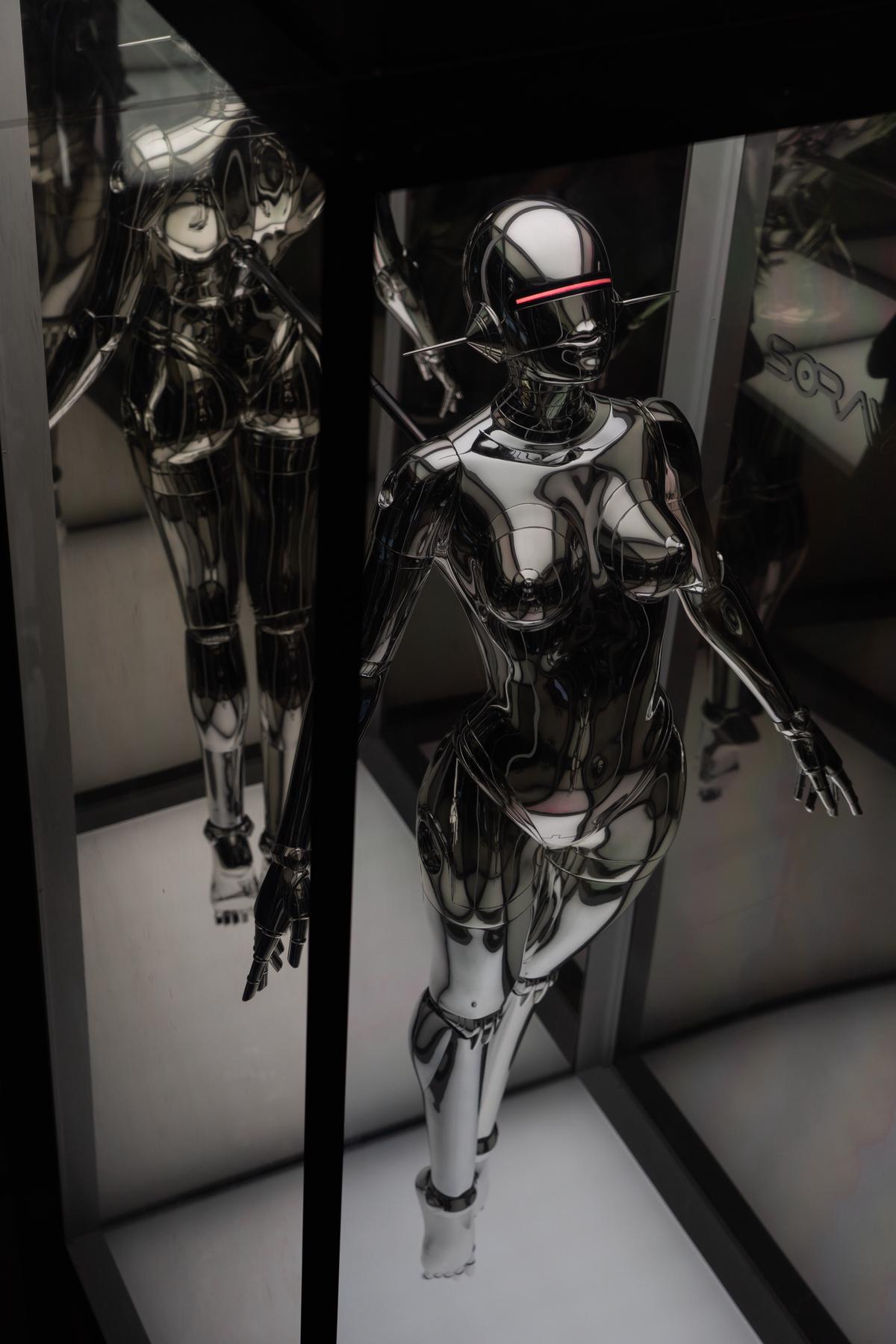As we stand on the cusp of a new technological era, the notion of Artificial General Intelligence (AGI) is slowly but surely transforming from mere science fiction to a palpable reality. Central to this extraordinary journey is ToddlerAGI’s AI, an exceptional architecture that is pushing the boundaries of AGI. This remarkable system, with its unique design and sophisticated features, holds a distinctive place in the world of AGI. Through the course of this investigation, we aim to shed light on the underpinnings that make ToddlerAGI’s AI truly unique, compare it with other AGI architectures, and explore its potential impact on various industries in the future.
Understanding Artificial General Intelligence
Understanding Artificial General Intelligence
Artificial General Intelligence (AGI) refers to a type of Artificial Intelligence that possesses the ability to understand, learn, and apply knowledge across a variety of tasks, just like a human being would. AGI holds a prominent position in the AI field due to its vast potential. Theoretically, an AGI system would be capable of performing any intellectual task that a human can do. This involves not just understanding or learning a specific set of tasks, but also being able to transfer that knowledge to new domains.
AGI Versus Narrow AI
Contrary to AGI, Narrow AI represents systems designed to perform specific tasks or solve particular problems. Unlike AGI systems that mirror human intelligence’s generic, adaptable nature, Narrow AI systems require specific programming for individual tasks. They are unable to learn or understand beyond their programmed capabilities. Common examples include recommendation algorithms on streaming platforms or navigation apps in your smartphones. Thus, the primary difference between AGI and Narrow AI lies in their level of versatility and adaptability.
Building Blocks of ToddlerAGI’s AI Architecture
To comprehend ToddlerAGI’s AI architecture, it’s essential to understand AGI’s fundamental concepts as it operates based on these principles. ToddlerAGI’s AI is designed to mimic the adaptability and learning targets of a human toddler, hence its name. Just as a toddler learns and improves over time while demonstrating a general understanding of their environment, ToddlerAGI also adopts this learning behaviour.
Teaching ToddlerAGI: The Approach
Unlike a traditional AI that is programmed to perform specific tasks, ToddlerAGI’s AI architecture aims to learn from experiences. Similar to how a human toddler interacts with their surroundings, making mistakes, and learning from them, ToddlerAGI is designed to learn from continuous interactions with its environment.
Interestingly, like humans learn in multiple modalities – visual, auditory, and tactile, ToddlerAGI also uses multi-modal learning. It employs reinforcement learning with an added notion of curiosity for unfamiliar things, ensuing in a more general understanding of its surroundings and tasks.
Breaking the Chains of Predefined Tasks
Classical Narrow AI systems often find themselves shackled, only capable of a particular, predefined task. ToddlerAGI, however, leaps beyond this boundary to forge a more generalized understanding. Instead of being hard-wired for a specific operation, it learns to understand and interact with its diverse environment from scratch. This adaptability and flexibility grant it the strength to navigate new scenarios, circumstances, and problem spaces. Hence showcasing how ToddlerAGI’s AI structure is a practical realization of AGI principles.

ToddlerAGI’s AI: The Core Architecture
Unveiling the Core of ToddlerAGI’s Architecture
The AI of ToddlerAGI stands on the firm grounds of a hybrid architecture, a successful marriage of multi-agent and single-agent models. This unique unification grants ToddlerAGI its remarkable capability to decipher complex puzzles through both isolated reasoning and the power of collective intelligence. A thorough understanding of this hybrid structure requires an in-depth overview of its fundamental components and analysis of their interplay.
Component Interactions and System Activation
The interaction of these independent agents is layered within a top-level system known as the ‘Supervisor.’ The Supervisor orchestrates the agents’ actions integrating their individual inputs into a cohesive whole. Every agent submits its proposed action to the Supervisor based on its internal DRL processes. The Supervisor then evaluates these proposals against the overall goal, selecting and implementing the most suitable action.
Data Trainability and Performance Metrics
Understanding the architecture of ToddlerAGI is incomplete without acknowledging its data trainability. The system can process a wide range of data types and learn from this data using its DRL algorithms. The performance is measured using objective metrics, such as task completion rates and efficiency scores. These metrics provide a quantitative measure of how well ToddlerAGI’s AI system is functioning and how effectively it is learning.
Introduction
In essence, the architectural design of ToddlerAGI’s AI represents an innovative construction, brilliantly fusing unified single and multiple agent mechanisms with deep reinforcement learning and collaborative decision-making strategies. Each constituent contributes to a harmonious confluence, encapsulating the epitome of collective intellect and problem-solving proficiency.

Advanced Features of ToddlerAGI’s AI
Detailed Architecture of ToddlerAGI’s AI
The architecture of ToddlerAGI’s AI is uniquely crafted. It assimilates myriad cutting-edge functionalities aimed at achieving artificial general intelligence. This inventive configuration, influenced by human neural networks and cognition, enables the software to autonomously learn from raw data and adjust to varying circumstances. Further enhancing its sophistication, the design is structured to comprehend natural language—critical for fluent interaction and communication.
Integration of Raw Data Learning
One of the distinguishing features of ToddlerAGI’s AI is its ability to learn from raw data without any pre-processing or manual data labelling. By directly absorbing and processing raw data streams, the AI can continuously learn and enhance its knowledge base. This learning approach mirrors the cognitive development of a young child, lending to its namesake, ToddlerAGI.
Adaptive Learning Capacity
The architecture of ToddlerAGI’s AI is designed for continual learning. Like a human toddler, it not only learns new concepts, but also builds on existing knowledge to understand and adapt to changing environments. This adaptability to various contexts and problems makes ToddlerAGI’s AI more effective in dynamic, real-world scenarios.
Natural Language Understanding
Understanding natural language is a critical feature embedded in ToddlerAGI’s AI. This capability allows the system to comprehend, interact, and respond accurately in human language. Through this, the AI breaks the barrier of technical jargon and interacts seamlessly with diverse users regardless of their technical proficiency.
Integration of Multiple AI Techniques
The architecture of ToddlerAGI’s AI is not restricted to a single AI technique. Instead, it integrates a variety of AI techniques such as deep learning, reinforcement learning, and probabilistic programming. This union of various AI models allows ToddlerAGI’s AI to deal with a wide array of tasks and functions, defying the limitations of using a single AI model.
Energy Efficiency and Scalability
While the advanced features of ToddlerAGI’s AI are impressive, they are not at the expense of efficiency. The architecture is designed to ensure low energy consumption even during complex computations. Moreover, the architecture is scalable which allows for the addition of more capabilities and learning power as required.
In essence, ToddlerAGI’s AI is an advanced and diverse system that owes its uniqueness to its distinct architecture. This state-of-the-art model harmoniously blends various AI techniques, encompassing raw data learning, adaptive learning, and natural language understanding. Moreover, it’s characterized by remarkable energy efficiency and scalability.

Comparison with Other AGI Architectures
Delving into the ToddlerAGI’s AI Architecture
The architecture of ToddlerAGI’s AI is thoughtfully crafted to emulate the learning progression of a human toddler. It leverages a cognitive-based AI model that mirrors a toddler’s experience of interacting with the world, thus acquiring knowledge and understanding. The design enables the system to learn organically from its experiences, learnings, and rewards, thereby enhancing its intelligence over time.
Comparison with Classic Symbolic AGI
Compared to classic symbolic AGI (Artificial General Intelligence) architectures such as the Cyc project, ToddlerAGI’s architecture is radically different. Classic Symbolic AI systems operate on pre-set knowledge bases and algorithms, greatly limiting their flexibility and learning capabilities. They are fed information and programmed to respond to inputs based on their existing knowledge. In contrast, ToddlerAGI’s AI learns from its environment and experiences, making it adaptable and capable of developing in unpredictable ways. Though Symbolic AI systems have their strengths – particularly in defined, rule-based environments – their inability to learn autonomously can leave them floundering in unfamiliar terrains.
Comparison with Neural-Network-Based AGI
When compared to neural-network-based AGI architectures like OpenAI’s GPT-3, ToddlerAGI’s AI architecture has distinct advantages as well as certain drawbacks. GPT-3 learns from the massive amount of text it is trained on, and it uses this training to generate remarkably cogent and creative responses. Its strength lies in its incredible computational power and its ability to learn from a vast dataset. However, it lacks the ability to learn from direct experience or understand the consequences of its actions.
On the other hand, ToddlerAGI’s AI architecture learns from direct experience and understands causality to a certain extent – an ability that remains unmatched by neural-network-based AGI architectures. However, since ToddlerAGI’s AI learns primarily from its own experiences rather than a vast dataset, its learning process might be slower and it might lack knowledge on topics it hasn’t encountered directly.
Comparison with Hybrid AGI Systems
Hybrid AGI systems, like IBM’s Watson, combine rule-based programming with machine learning capabilities. These architectures are more adaptive than their purely symbolic counterparts as they can learn from their inputs to a certain extent. Watson, for example, became famous for learning enough about Jeopardy to win the game show.
ToddlerAGI’s AI, however, learns more like a human child than any of these systems. It doesn’t just adjust its algorithms based on new inputs – it fully learns from its interactions with the environment, developing a deeper understanding of concepts over time. This architecture has the potential to bring us closer to creating a truly intelligent system, but it is also unpredictable and requires careful monitoring and guidance as it learns.
Each AGI architecture comes with its unique strengths and weaknesses. The optimal solution may emerge from a hybrid of different approaches. As strides are made in AI research, the integration of more human-like learning processes similar to those exhibited in ToddlerAGI’s AI architecture may potentially bridge the gap to the creation of truly intelligent systems.

Future Applications and Implications of ToddlerAGI’s AI
Potential Industrials Applications of ToddlerAGI’s AI
With a learning speed mirroring that of human toddlers, ToddlerAGI’s AI possesses potential across diverse sectors. In the healthcare domain, this AI could greatly benefit complex disease diagnosis. Through swiftly learning from vast datasets of patient information, not only could this streamline the diagnostic process, but it could also enhance its precision and lead to improved patient outcomes.
When it comes to education, ToddlerAGI’s AI could be a game-changer, enabling more accurate personalization of the education system to cater to the different paces and styles of learners. Likewise, businesses dealing with customer service could utilize this AI to quickly learn and adapt to individual consumer tastes, thus providing customized shopping experiences. This could escalate customer satisfaction and cultivate brand loyalty.
The Ethical and Societal Implications of ToddlerAGI’s AI
Despite its potential, ToddlerAGI’s AI also presents ethical and societal implications that must be considered. On the one hand, this type of AI holds vast potential to augment and advance human abilities. On the other hand, its capability to rapidly learn and grow also raises concerns about privacy and security. Given that ToddlerAGI’s AI learns from every interaction it has, it is crucial to ensure that it does not inadvertently violate individual privacy or suffer from security breaches.
There is also the ethical matter of its decision-making process. As the AI rapidly adapts and learns from its environment, it will inevitably be making choices that can have significant impacts. Ensuring these decisions are made ethically and fairly is paramount to avoid inadvertent harm or prejudice.
Technical Challenges in ToddlerAGI’s AI Architecture
Developing an AI system with the learning capacity of ToddlerAGI’s AI presents technical challenges. One of the most pressing is developing algorithms capable of such rapid and extensive learning. Ensuring these algorithms are robust and capable of handling vast amounts of data without degrading performance or accuracy is a significant technical hurdle.
Another challenge lies in creating an AI system that is both adaptable and robust. The system must be able to learn quickly and adapt to different situations while still maintaining operational integrity. Developing such systems requires a thorough understanding of artificial intelligence and significant computing resources.
Benefits and Future Impacts
Despite these challenges, the benefits of ToddlerAGI’s AI in transforming various industries, coupled with its potential societal implications, make it an intriguing area of study in the field of AI. With the field constantly evolving, it remains to be seen how ToddlerAGI’s AI will impact our future.

Photo by mrsunburnt on Unsplash
In the grand scheme of technological advancements, ToddlerAGI’s AI reflects an unprecedented leap towards realizing the dream of true Artificial General Intelligence. Its unique design and advanced features raise the bar for AGI, offering incredible potential to revolutionize a broad spectrum of industries. However, while celebrating these technical prowess, we must also navigate through the ethical and societal implications it brings. As the future unfolds, it will be fascinating to witness how this AGI architecture further evolves and shapes our world.

